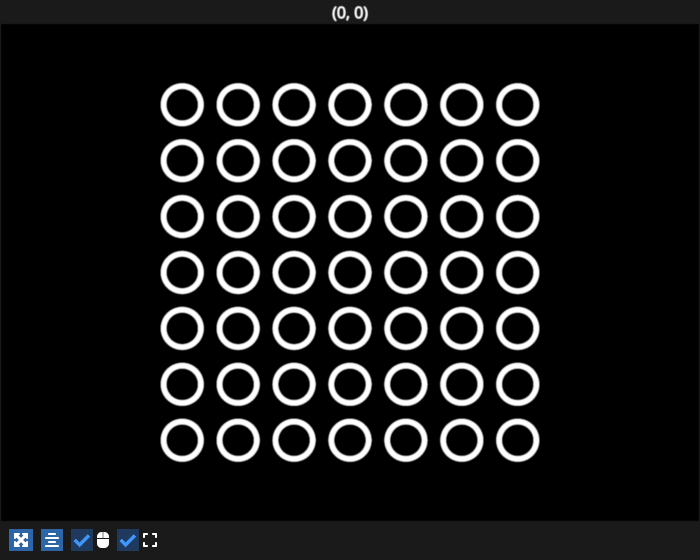Note
Go to the end to download the full example code.
Highlight nearest circle#
Shows how to use the “pointer_move” event to get the nearest circle and highlight it.

/home/runner/work/fastplotlib/fastplotlib/fastplotlib/graphics/features/_base.py:18: UserWarning: casting float64 array to float32
warn(f"casting {array.dtype} array to float32")
# test_example = false
from itertools import product
import numpy as np
import fastplotlib as fpl
import pygfx
def make_circle(center, radius: float, n_points: int) -> np.ndarray:
theta = np.linspace(0, 2 * np.pi, n_points)
xs = radius * np.cos(theta)
ys = radius * np.sin(theta)
return np.column_stack([xs, ys]) + center
spatial_dims = (100, 100)
circles = list()
for center in product(range(0, spatial_dims[0], 15), range(0, spatial_dims[1], 15)):
circles.append(make_circle(center, 5, n_points=75))
pos_xy = np.vstack(circles)
figure = fpl.Figure(size=(700, 560))
line_collection = figure[0, 0].add_line_collection(circles, colors="w", thickness=5)
@figure.renderer.add_event_handler("pointer_move")
def highlight_nearest(ev: pygfx.PointerEvent):
line_collection.colors = "w"
pos = figure[0, 0].map_screen_to_world(ev)
if pos is None:
return
# get_nearest_graphics() is a helper function
# sorted the passed array or collection of graphics from nearest to furthest from the passed `pos`
nearest = fpl.utils.get_nearest_graphics(pos, line_collection)[0]
nearest.colors = "r"
# remove clutter
figure[0, 0].axes.visible = False
figure.show()
# NOTE: fpl.loop.run() should not be used for interactive sessions
# See the "JupyterLab and IPython" section in the user guide
if __name__ == "__main__":
print(__doc__)
fpl.loop.run()
Total running time of the script: (0 minutes 0.412 seconds)
